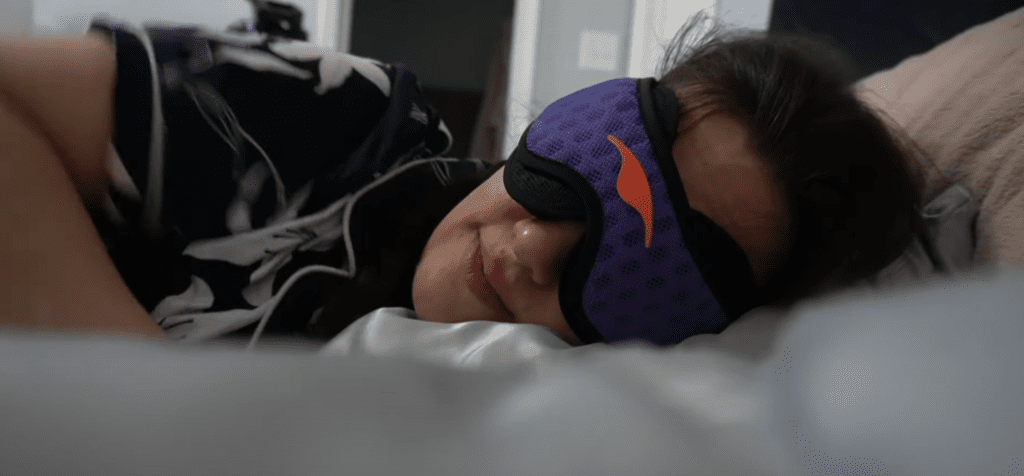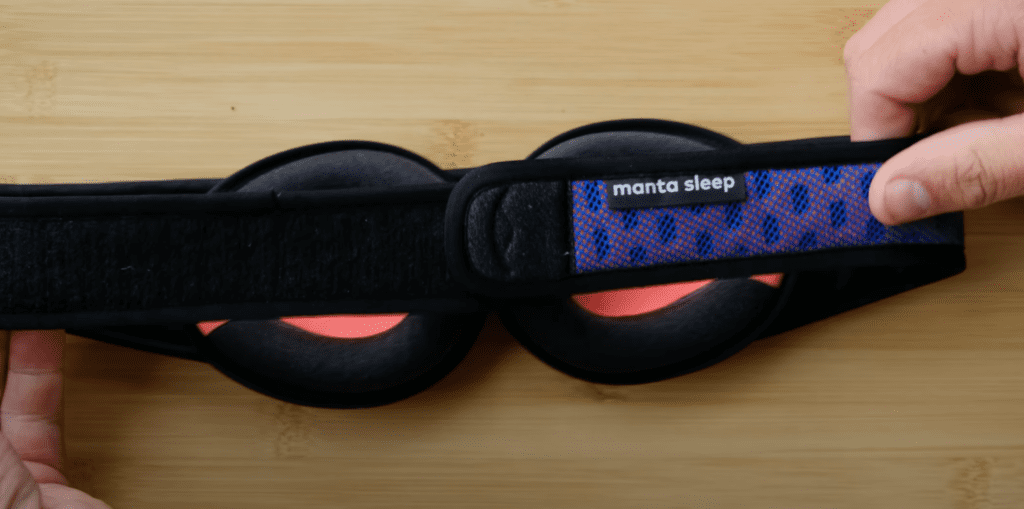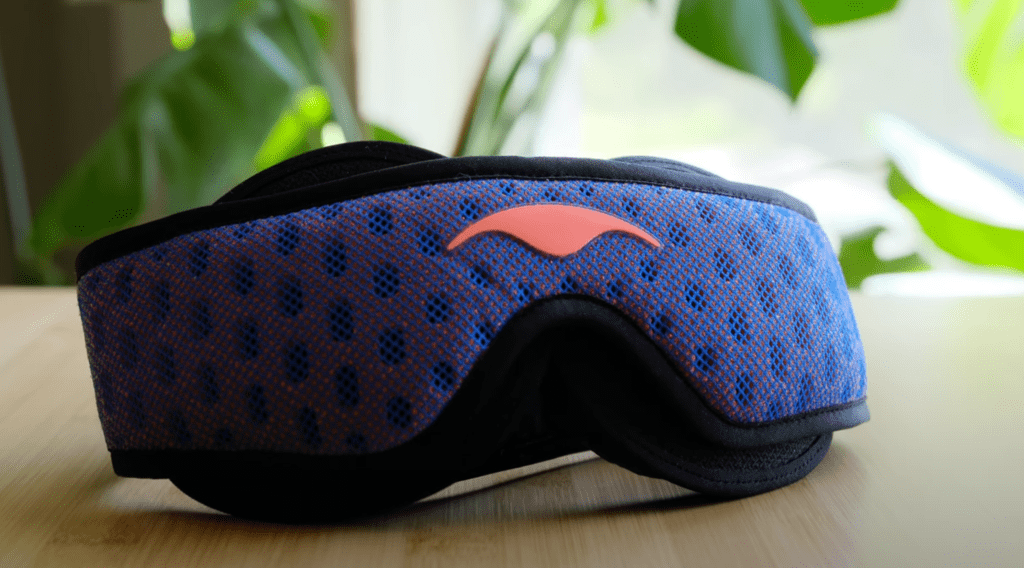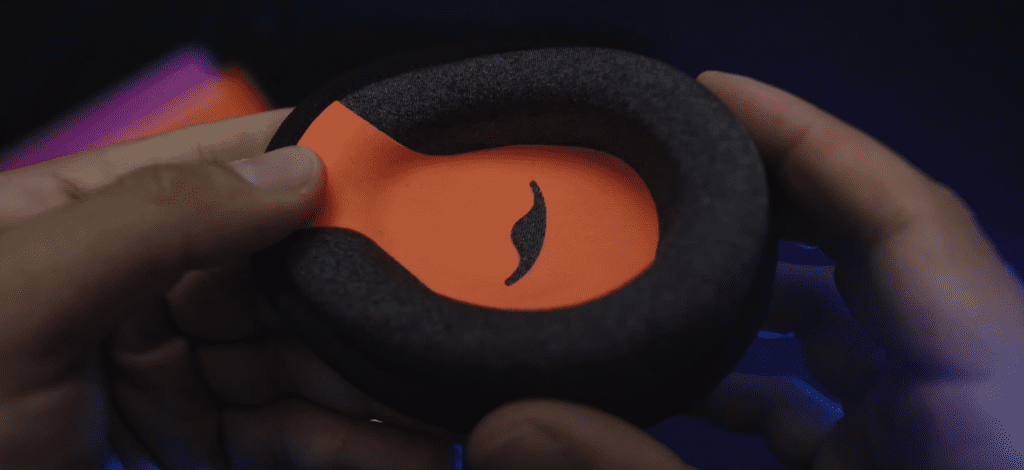Manta Pro Sleep Mask Review: The Side Sleeper’s Ultimate Solution for Total Darkness
Three months ago, I bit the bullet and spent $79 on the Manta Pro Sleep Mask for side sleepers. I’d been seeing it everywhere online, with its unique C-shaped eye cups and promises specifically for side sleepers like me. This wasn’t my first attempt – I’ve gone through at least seven different sleep masks over the years, all ending up forgotten in my nightstand drawer.
The breaking point came after daylight saving time hit, and suddenly morning sun started pouring through my blinds at 5:30am. Blackout curtains helped some, but light still leaked around the edges. As someone who exclusively sleeps on their side, most sleep masks just get shoved off my face by my pillow, leaving me wide awake hours before my alarm.
If you’re a side sleeper struggling with light issues, you can easily pick up a Manta Pro from Amazon – though keep reading to see if it’s worth the investment for your specific situation.
Disclosure: This blog is reader-supported and contains affiliate links. I may make a small commission for qualifying purchases at no extra cost to you.
Manta Pro Sleep Mask Design: What Makes It Different for Side Sleepers
When the package arrived, I was surprised by the mask’s weight and build quality. At 9.14 ounces (according to the product specs), the Manta Pro is slightly heavier than the flimsy drugstore masks I’d tried before. The thick foam eye cups and sturdy strap material immediately made it clear this wasn’t just another cheap sleep mask.
The cups have this odd C-shape that supposedly sits flat against your temples so there’s nothing bulky between your head and pillow when side sleeping. Sounded good in theory, but I remained doubtful.
First Weeks with the Manta Pro: Finding the Perfect Position for Side Sleeping
The first few nights were frustrating. I positioned the strap like I normally would, just above my ears. Bad move. Every time I turned to my side, my pillow pushed against the cups, shifting the whole mask out of place.
After searching online for solutions, I found other side sleepers mentioned positioning the strap higher above the ears with the eye cups raised slightly upward. Making this adjustment completely changed my experience – the mask finally stayed in place throughout the night.
Getting the cups positioned correctly took some experimentation too. The adjustable velcro is both a blessing and a curse – it allows for customization but finding the perfect spot takes time.
Once I got it right though, the light blocking was incredible.
Total Darkness, Better Sleep: My Transformation with the Manta Pro
Before the Manta Pro Sleep Mask, I’d wake up a couple times each night when the smallest light change hit my eyes (bedroom door opening and closing, phone or smartwatch lighting up). After figuring out the correct positioning, I started sleeping straight through until my alarm. My Fitbit showed my deep sleep increasing from an average of 41 minutes to nearly 90 minutes per night.

The first time I woke up after a full night wearing it properly, I was genuinely shocked at how rested I felt. I hadn’t realized how much interrupted sleep was affecting me until I finally experienced proper darkness.
I tested it by leaving my bedroom light on while wearing the mask. No light leaks. That’s how effective the blackout is.
The mask has been amazing for my afternoon naps too. I used to toss and turn during the day, even when exhausted. Now I can take a 30-minute power nap at 2pm in broad daylight and actually fall asleep.
This would be perfect for night shift workers needing to sleep during daylight hours – several reviews I read from nurses and security guards said exactly that. One nurse mentioned how it helped her finally get some sleep after coming home from a 12-hour night shift, even with sun streaming through her windows.
Read more reviews on Amazon here.
Does the Manta Pro Really Work for Side Sleepers?
Here’s where this sleep mask really differs from others I’ve tried. Once positioned correctly (higher strap placement is key), I can press my face into the pillow without the mask getting pushed up or letting light leak in.
The C-shaped eye cups genuinely do sit flat enough that there’s minimal pressure when side sleeping. That said, I’ve noticed it works better with my firmer memory foam pillow than with my squishy down alternative one. Something about how my head sinks into the softer pillow creates more shifting.
Some nights I still wake up to minor adjustments needed, especially if I’ve been tossing and turning. But compared to completely losing my sleep mask during sleep (a common occurrence with other brands), this is a massive improvement for side sleepers.
Comfort and Breathability: Why the Manta Pro Feels Different
My biggest surprise was how the sleep mask doesn’t make my face sweaty. Previous masks would leave me with that gross, damp feeling around my eyes. The Manta Pro has some kind of ventilation that actually works.
I love that my eyelashes don’t brush against fabric all night. The eye cups create a small void in front of your eyes, which feels strange at first but becomes oddly comforting.
After about two weeks of regular use, I stopped noticing I was wearing it. Now it’s just part of my sleep routine.
My sensitive skin usually rebels against anything touching my face overnight, but I haven’t had any irritation issues.
No weird marks in the morning either, except a slight indentation where the strap sits, which fades within minutes.
Durability After 3 Months: Is the Manta Pro Built to Last?
I’m now three months in, washing the sleep mask weekly (they include a mesh washing bag that’s actually useful). The fabric has pilled slightly but nothing major. The eye cups have maintained their shape despite me occasionally crushing them in my suitcase during a trip.

My one concern is the velcro attachment points. They’re still working perfectly, but I wonder how long they’ll maintain their grip. Given the price point, I’m hoping for at least a couple years of regular use before needing replacement.
The travel case they include is sturdy enough for protection but bulkier than I’d like for packing. I ended up recently buying a smaller case separately for trips.
Is the Manta Pro Sleep Mask Worth $79? An Honest Value Assessment
Let’s talk about the $79 price tag. It’s steep. No getting around that. Is it worth it? That depends entirely on how much you value sleep.
For perspective, I’ve probably spent $120+ on cheaper sleep masks over the years. None worked. I’ve also tried blackout curtains with velcro edges to seal light gaps, stick-on window blockers, and even considered those custom-cut blackout window films that cost hundreds of dollars.
If you’re an occasional mask user, this is definitely overkill. But for nightly use, especially with specific challenges like side sleeping or serious light sensitivity, I’ve found the investment justified. Sleep affects literally everything in your life – mood, productivity, health. Once I framed it that way, $79 seemed more reasonable.
Who Should Buy the Manta Pro Sleep Mask: Best for Side Sleepers and Light Sensitivity
From my experience, you’ll appreciate the Manta Pro Sleep Mask if:
- You ONLY sleep on your side and have given up on finding masks that stay put
- Light wakes you up constantly
- You work night shifts and sleep during daylight
- You’ve already tried cheaper options without success
- You’re tired of waking up with a mask lost somewhere in your bedding
Skip it if you’re just looking for something occasional for travel or don’t have specific sleep challenges.
Tips for New Manta Pro Users: Getting the Most from Your Sleep Mask
If you do decide to give the Manta Pro Sleep Mask a shot, save yourself the frustration I experienced:
- Wear the strap higher on your head than seems natural
- Spend time adjusting the eye cups before your first night
- Try sleeping on different pillow types to find what works best
- Don’t overtighten the strap – it should be secure but not tight
- Give yourself at least a week to adapt before judging
Final Verdict on the Manta Pro Sleep Mask: A Side Sleeper’s Essential
Three months ago, I was close to accepting that good sleep just wasn’t in the cards for me. Now I’m sleeping better than I have in years. The Manta Pro Sleep Mask isn’t perfect – nothing is – but it solved my specific side sleeping and light sensitivity issues better than anything else I’ve tried.
Would I buy this sleep mask again if I lost it tomorrow? Without hesitation. Would I recommend it to everyone? No. But for side sleepers battling light issues, it’s changed my sleep for the better. And that’s coming from someone who was fully prepared to be disappointed… again.
Frequency Asked Questions
Why is the Manta sleep mask so expensive?
The Manta sleep mask is expensive because it features specialized engineering with C-shaped eye cups for side sleepers, premium ventilated materials, and a fully adjustable design that solves problems cheaper masks don’t address. Its durability and effectiveness at creating complete darkness justify the higher price for many users who experience significantly improved sleep quality compared to budget alternatives.
Is it OK to wear a sleep mask every night?
Yes, it is OK to wear a sleep mask every night as long as it fits properly and doesn’t cause discomfort. Quality sleep masks like the Manta Pro are designed for nightly use and can improve sleep by blocking light that disrupts your natural sleep cycle. With breathable materials and proper eye cup design, there are no health concerns with regular use.
What are the negatives of sleep masks?
The negatives of sleep masks include potential discomfort with poorly designed models, feeling claustrophobic initially, and possible skin irritation from lower-quality materials. Some masks shift during sleep, disrupting rest rather than improving it, while others trap heat or don’t block light completely. Premium masks like the Manta Pro minimize these issues through adjustable components and quality construction.
What does the Manta sleep mask do?
The Manta sleep mask creates complete darkness by blocking 100% of light with its specialized eye cups, allowing for deeper sleep regardless of environmental lighting. Its C-shaped design accommodates side sleeping without shifting, while adjustable components customize fit for different face shapes. By creating an optimal dark environment, it helps regulate melatonin production and improves sleep quality for those with light sensitivity or irregular sleep schedules.


